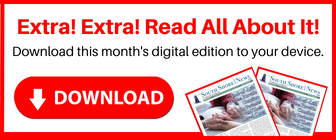By Patricia Prewitt
My Personal Rx Adviser
I spoke with a client who is still working, and, for the first time, elected to choose the high-deductible health insurance plan (HDP) offered by his employer. Now that the new insurance year is in full swing, there seems to be a bit of “buyer’s remorse.” There was confusion about how the prescription costs would be accounted for. Here are a few of things we talked about:
Can you explain to me how my high-deductible plan works?
No. I am not a registered medical insurance agent. There are a wide variety of high-deductible plans, and employers structure their offerings to employees in many different ways. Larger employers may be “self-funded,” which means the plans are different than those offered by states.
So, what would I do to find out about my prescription coverage?
Check your plan documents from the insurance carrier and your employer. Commonly, there might be a $250 prescription deductible for a single person or a $500 prescription deductible for spouse/family plans. If there is not a prescription deductible amount defined in the plan, it is likely that your prescription costs will be at “full price,” until the overall high-deductible plan number is met.
Wow. I guess I didn’t realize that. Are there any ways for me to save on my out-of-pocket Rx costs?
Maybe. If any of your medications are high-cost brand name products, check the brand website for a savings card. If yes, register, and bring a copy of the card sent to you via email to the pharmacy that fills your prescription. This may work to reduce the price you pay at the pharmacy. How the lower out-of-pocket cost portion you paid is applied to your deductible depends on the rules (the pharmacy adjudication process) for the employer plan.
Are there other opportunities to save money?
For higher cost generics, for example, $45 at “retail cost,” try savings cards. These are offered by NeedyMeds, GoodRx, and others. Compare the price using your insurance to the coupon with cash priceusing the savings card. Decide which makes more sense. The caveat? These cards bypass any prescription insurance processing. Cash paid (usually) does not accrue to your plan deductible, but it may reduce that $45 price to something lower, often under $10.
Remind me, why did I choose this high-deductible plan?
You probably considered yourself and/or your dependents to be healthy, and wanted to pay lower monthly health insurance premiums. Plus, your employer may have offered a health savings account (HSA) benefit that allows for a type of tax-advantaged savings account, funded with your payroll deductions. They may have even sweetened the high-deductible plan option with some employer matching dollars to your HSA.
Anything else?
Choosing a high-deductible plan to reduce monthly premiums may be a great option for healthy people who require few services. Employers like the HDP plans as a way to offer affordable employee coverage, and to control costs. Unlike flexible savings accounts (FSAs), health savings accounts do not require use of the funds within a fixed time period. HSA funds remain with the account holder for life to use for reimbursement of certain health expenses.
About the Author: Patricia Prewitt is a local Massachusetts resident who spent over 30 years in
the pharmaceutical industry. Tricia is a consumer education advocate, and loves helping people find ways to save money on their prescriptions. More information and free resources are available on her website at https://mypersonalrxadvisor.com/resources or call her at 508-507-8840. Favorite Quote: “Act as if what you do makes a difference. It does.” – William James
Content provided is for education purposes only, and is not intended as a substitute for advice from a qualified medical professional. The opinions expressed within are those of the author.


